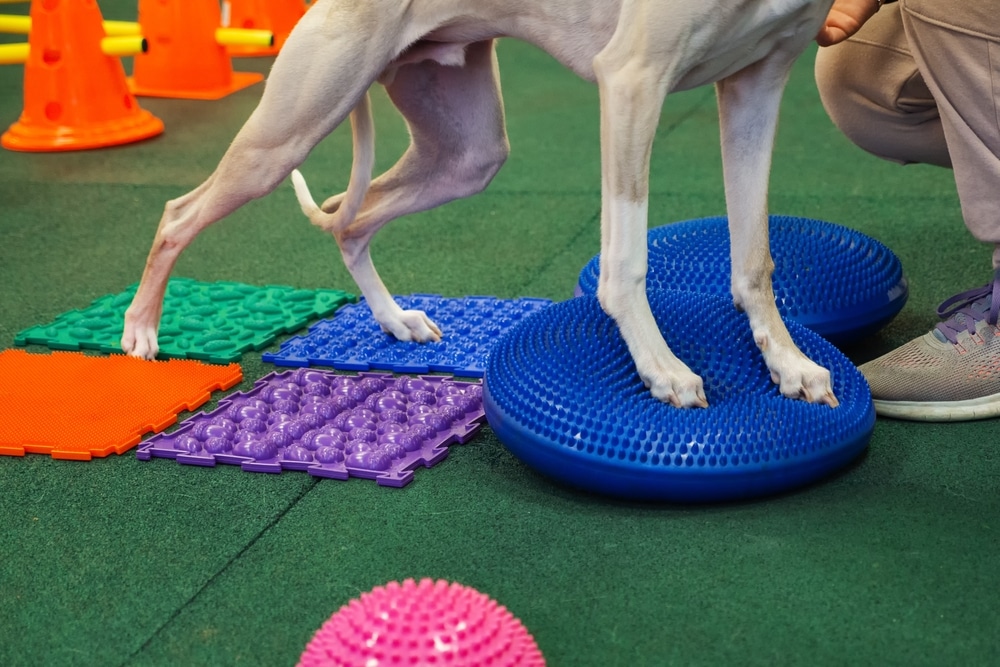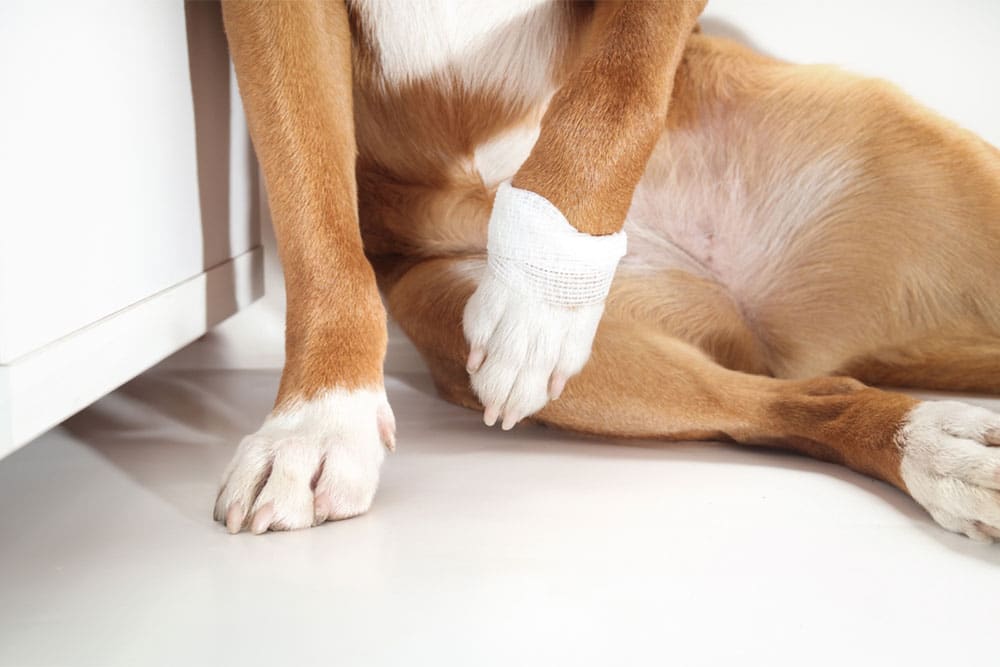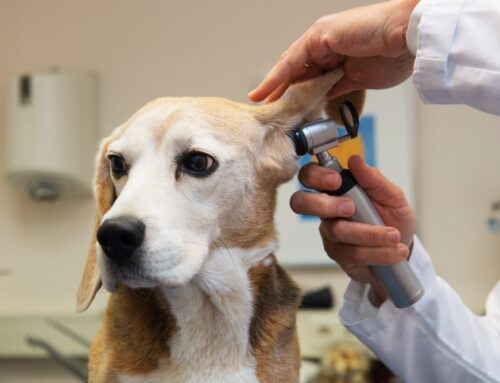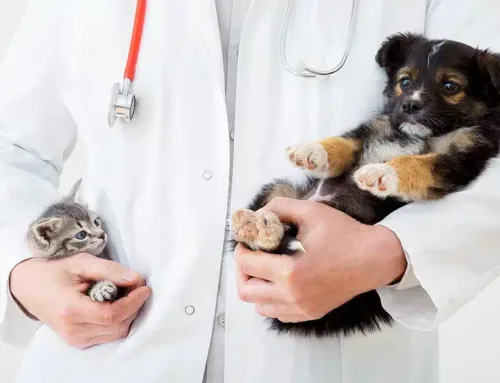From Subtle Limp to Serious Concern: Understanding Pet Mobility Issues
You notice your pet limping after a long walk, but the limp persists into the next morning. What should you do? This discomfort may stem from a small injury or indicate deeper issues such as torn ligaments, arthritis, or bone disease. Diagnostics like digital X-rays and ultrasound can reveal what the eye cannot see.
At Emerald Animal Hospital in Los Angeles, CA, same-day visits and advanced in-house tools provide fast answers and relief, helping pets return to comfort and mobility sooner.
Common Causes of Limping in Pets
When your dog or cat begins limping, the cause can range from a simple thorn in their paw to complex orthopedic disease. Knowing when to observe versus when to seek urgent veterinary care helps protect your pet from worsening pain or injury.
Minor Injuries and External Factors
Many cases of sudden limping stem from mild, treatable injuries.
- Cracked, broken, or torn nails are among the most frequent causes, especially in active dogs who catch their claws on carpet, concrete, or rough surfaces. These injuries are painful but often heal quickly with rest and nail care.
- Bite wounds can cause swelling, bruising, and deep tissue pain. Because these punctures frequently trap bacteria under the skin, prompt cleaning and antibiotics are essential to prevent infection.
- Environmental hazards such as Foxtails are common in dry climates like Southern California. These barbed grass seeds can lodge between toes or burrow into tissue, leading to infection, abscesses, and persistent limping until removed.
Musculoskeletal Injuries
Sudden limping often originates from trauma to muscles, ligaments, or bones. Without proper diagnosis, these injuries can worsen over time.
- Sprains occur when ligaments stretch or partially tear during play, jumping, or sharp turns. Treatment for sprained legs typically includes rest, pain relief, and controlled activity.
- Muscle tears range from minor strains to complete ruptures. You may notice swelling, heat, or tenderness when the affected area is touched. Severe cases may require surgery and rehabilitation.
- Ligament injuries– particularly to the cruciate ligament in the knee- are among the most serious orthopedic issues in dogs. The canine cruciate ligament provides stability to the knee joint. When torn, pets often show sudden, non-weight-bearing lameness and may sit or stand with the injured leg slightly raised. These injuries rarely heal on their own and typically require surgical stabilization followed by physical rehabilitation to restore mobility.
- Broken bones are orthopedic emergencies. Pets with fractures usually refuse to bear weight, and swelling or deformity is often visible. Immediate care ensures proper bone alignment and pain control.
Chronic and Progressive Conditions
Not all limping appears suddenly. Gradual-onset lameness often points to degenerative or inflammatory diseases that require long-term management.
Joint and Bone Disorders
Arthritis and degenerative joint disease affect millions of pets, especially as they age. Arthritis in cats can be easy to miss, as cats hide discomfort and may simply jump less or move more slowly. In dogs, arthritis often follows previous injuries or joint instability.
Hip dysplasia occurs when the hip joint develops abnormally, causing uneven wear on cartilage and painful arthritis. Large breeds are most at risk, but any dog can be affected. Early diagnosis allows for surgical correction or medical management before arthritis becomes advanced.
Patellar luxation, or kneecap dislocation, causes intermittent limping or “skipping” when the kneecap slides out of place. Small-breed dogs are most commonly affected.
Immune-Related and Infectious Causes
Some lameness stems from inflammation, immune dysfunction, or infection.
Canine immune-mediated polyarthropathy occurs when the immune system attacks joint tissue, causing swelling and stiffness in multiple limbs. These pets may also show fever and lethargy.
Tick-borne diseases such as Lyme disease can trigger shifting leg lameness that moves from limb to limb. Prevention with veterinarian-approved tick control products is key, especially in wooded or grassy areas.
The Role of Diagnostics in Identifying Causes
Accurate diagnosis is the cornerstone of effective treatment. Because limping can result from bone, muscle, nerve, or immune-related issues, comprehensive diagnostics are essential for determining the underlying cause.
Advanced Diagnostic Tools
At Emerald Animal Hospital, our diagnostic services provide complete evaluation and same-day results to reduce stress and waiting time for families.
- Digital X-rays offer instant, high-resolution imaging that reveals fractures, joint abnormalities, arthritis, and bone tumors. Radiography is often the first step in identifying structural problems.
- Ultrasound allows real-time assessment of soft tissues such as ligaments, tendons, and muscles and can detect fluid or inflammation around joints.
- For more complex cases, small animal MRI or CT scans provide detailed imaging of ligaments, cartilage, and spinal structures that are not visible on X-rays.
The Importance of Blood Panels
Blood testing helps rule out systemic causes of limping that may not show up on imaging. A complete blood count (CBC) can detect infection, inflammation, or anemia that may contribute to weakness or pain. Chemistry panels evaluate organ and metabolic function, identifying imbalances that affect mobility or overall well-being. Tick-borne disease testing can confirm infections such as Lyme or ehrlichiosis, while autoimmune panels uncover immune-mediated arthritis that mimics orthopedic disease.
In addition to diagnosing the cause of lameness, blood panels help veterinarians determine whether a pet is healthy enough to safely receive pain medications, sedation, or anesthesia for imaging or surgery. Assessing liver and kidney values ensures that medications are processed safely and reduces the risk of complications during treatment.
A thorough physical exam, combined with diagnostic imaging and laboratory testing, provides a complete picture of your pet’s health and mobility challenges, allowing for safe, effective, and individualized care.
Comprehensive Treatment for Every Stage of Care
At Emerald Animal Hospital, our team tailors treatment to each pet’s unique needs- from sudden injuries to long-term mobility support. Pets experiencing acute pain or sudden lameness can be seen promptly through our urgent care services, where same-day evaluation and diagnostics provide fast relief and answers.
For more advanced orthopedic concerns, we coordinate with board-certified specialists who perform complex surgical procedures right in our hospital, ensuring continuity of care and expert oversight throughout recovery.
When mobility issues are part of a pet’s aging or end-of-life journey, our compassionate hospice services focus on comfort, dignity, and pain control. Whether managing chronic arthritis, addressing a sudden injury, or supporting a senior companion through their final stages, our goal is the same- to relieve pain, preserve mobility, and enhance quality of life at every step.
At-Home Support for Pets
While not every limp can be prevented, thoughtful management helps pets stay active and pain-free longer.
Home Care Strategies
Structured exercise, including gentle warm-ups and cooldowns, keeps joints flexible and reduces stiffness. Maintaining a healthy weight is equally important, as excess pounds add stress to joints and ligaments.
Pain management may include prescribed medications, joint supplements, and supportive surfaces for rest. If your veterinarian recommends physical therapy or laser therapy, consistent follow-through can greatly enhance long-term mobility.

Taking the Next Step for Your Pet’s Comfort
Persistent limping, swelling, or reluctance to bear weight signals the need for prompt evaluation. Waiting may allow injuries to worsen or lead to irreversible joint damage.
Call us at (310) 564-0013 or schedule an appointment for a comprehensive mobility assessment. At Emerald Animal Hospital, our compassionate team, same-day appointments, and full in-house diagnostics ensure your pet receives immediate, expert care for any mobility concern.









Leave A Comment